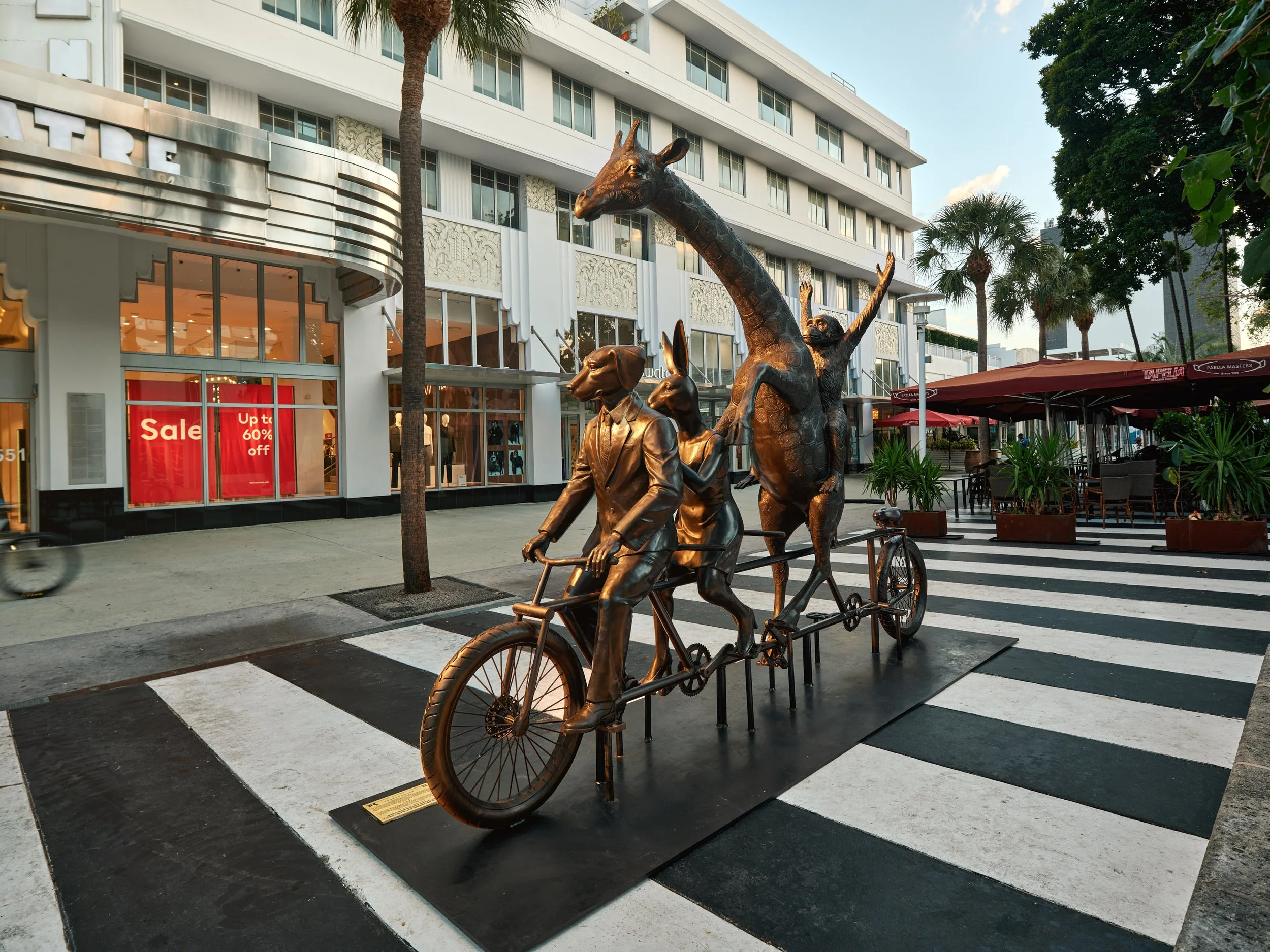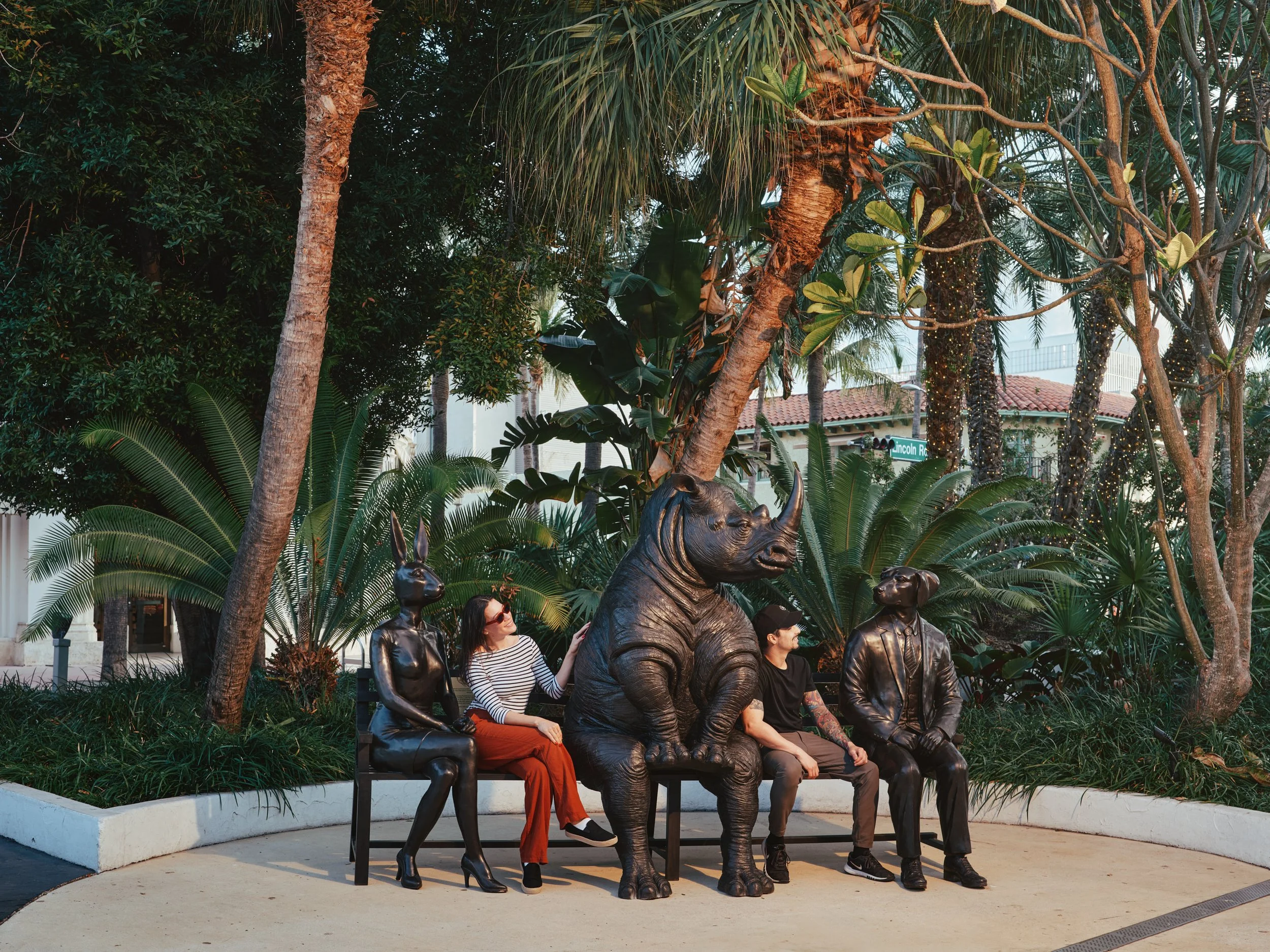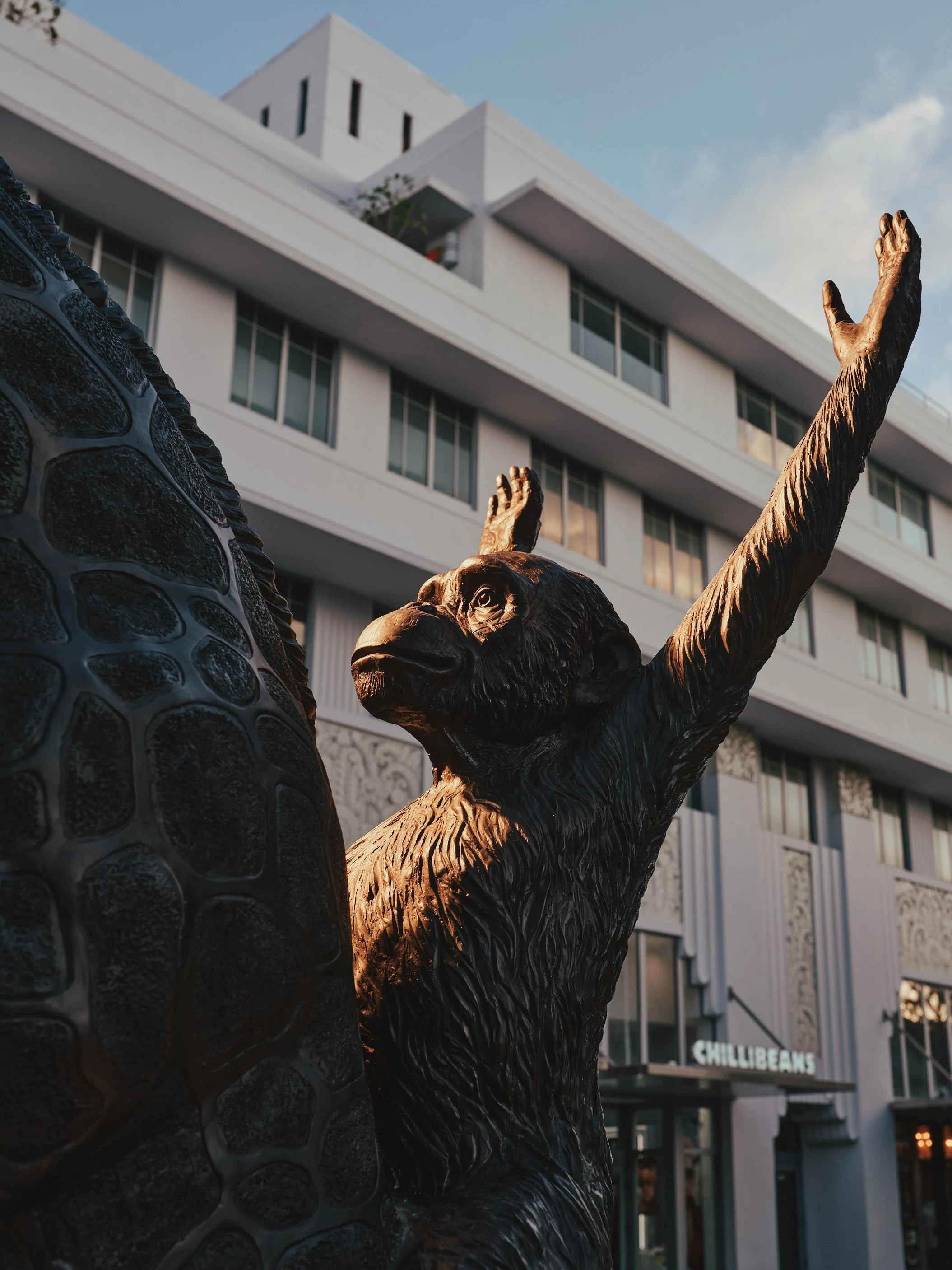When Art Meets Architectural Photography
My favorite commissions are often the ones I don’t see coming. From industrial farms to elevator installations: this career has a knack for taking me to the unexpected. I was flattered and inspired when world-renowned public art power couple Gillie & Marc reached out and informed me that they specifically seek architectural photographers when looking to document their work.
Gillie & Marc need no introduction for those in the “know.” But their work is displayed in public spaces worldwide from Shanghai to New York City, so even if you don’t know them by name, there’s a decent chance you’ve taken a selfie with one of their interactive animal-hybrid bronze sculptures.
They aspire to raise awareness for animal rights and conservation through their bronze gallery of characters such as Dogman and Rabbitwoman.
“Art has the power to connect people to causes that matter. We want everyone who visits these sculptures to leave with a renewed sense of hope and determination to make a difference.” Gillie & Marc
And now Miami gets another ounce of artistic credibility by welcoming two of their sculptures to Miami Beach’s Lincoln Road shopping mall. The two pieces in question are:
“The White Rhino Bench of Friendship.” in which Dogman and Rabbitwoman sit beside a majestic white rhino on a stunning bronze bench. The interactive design encourages visitors to sit, take photos, and reflect on the pressing need to protect endangered species.
“The Giraffe and Chimpanzee Were on a Wild Ride to a Safer Place with Rabbitwoman and Dogman.” Dogman and Rabbitwoman lead the way on a bicycle built for four; a playful chimpanzee on the back of a tall giraffe joins them. Visitors are encouraged to climb aboard the fourth seat and imagine themselves on a mission to create a safer world for wildlife.
Scroll to the end to see all the images and a full breakdown of how it was shot.
My absolute favorite shot of the set. In love with the beautiful warm light emulating sunset, the subject separation, and the genuine happiness emanating from our little hero who was so excited to “pet the animals.”
Does Architectural Photography Translate to Documenting Art?
Though the subject matter is different from my usual, my approach remains the same. I am heavily influenced by the principles of cinema: lighting, framing, and movement blending to tell a story, so whether you’re shooting buildings or people, the recipe doesn’t change.
I want each shot I take to stand on its own, but I always compose with harmony in mind. How will the whole set flow to influence the audience’s emotions? Ultimately, how people feel when looking at my pictures is significantly more important than if they’re impressed by any of the individual, technical variables, and when your clients are artists, this outcome matters above the rest. We can argue until the sun turns red about what “art is,” and I don’t think we’ll ever come to a unanimous agreement. For my purposes, I often feel that it’s whatever you can “get away with” given some of what sells for insane amounts of cash. Maybe I am just old and yelling at too many clouds. But I think anyone who calls themselves an artist will tell you that they want you to feel something, anything, and that’s more important than ever in the emotionally limp carousel of content we drown ourselves in these days.
Working with artists pours a little sanity back into my heart. I need that pressure sometimes. The pressure to turn my photos into vessels that inject an audience with a portion of the hope that you can experience for yourself in person. That’s why I love working with architects even within my normal rogues gallery of clients. People who give a damn about aesthetics and design are my tribe.
Gillie & Marc’s bronze sculptures are intended for physical interactions from the public. Audiences are encouraged to sit and pose with the sculptures as a way of cultivating an emotional connection and empathy with the plight of the Earth’s wildlife. The artists hope to spark conversations about the importance of animal conservation.
A little off camera flash elevated this image and turned it from a flat, gloomy shot into one full of texture and contrast.
In Architectural Photography, details matter to quote my favorite fictional investigator. These are among my favorite shots to plan for as I feel they bring harmony to a set and can stir beauty from their simplicity.
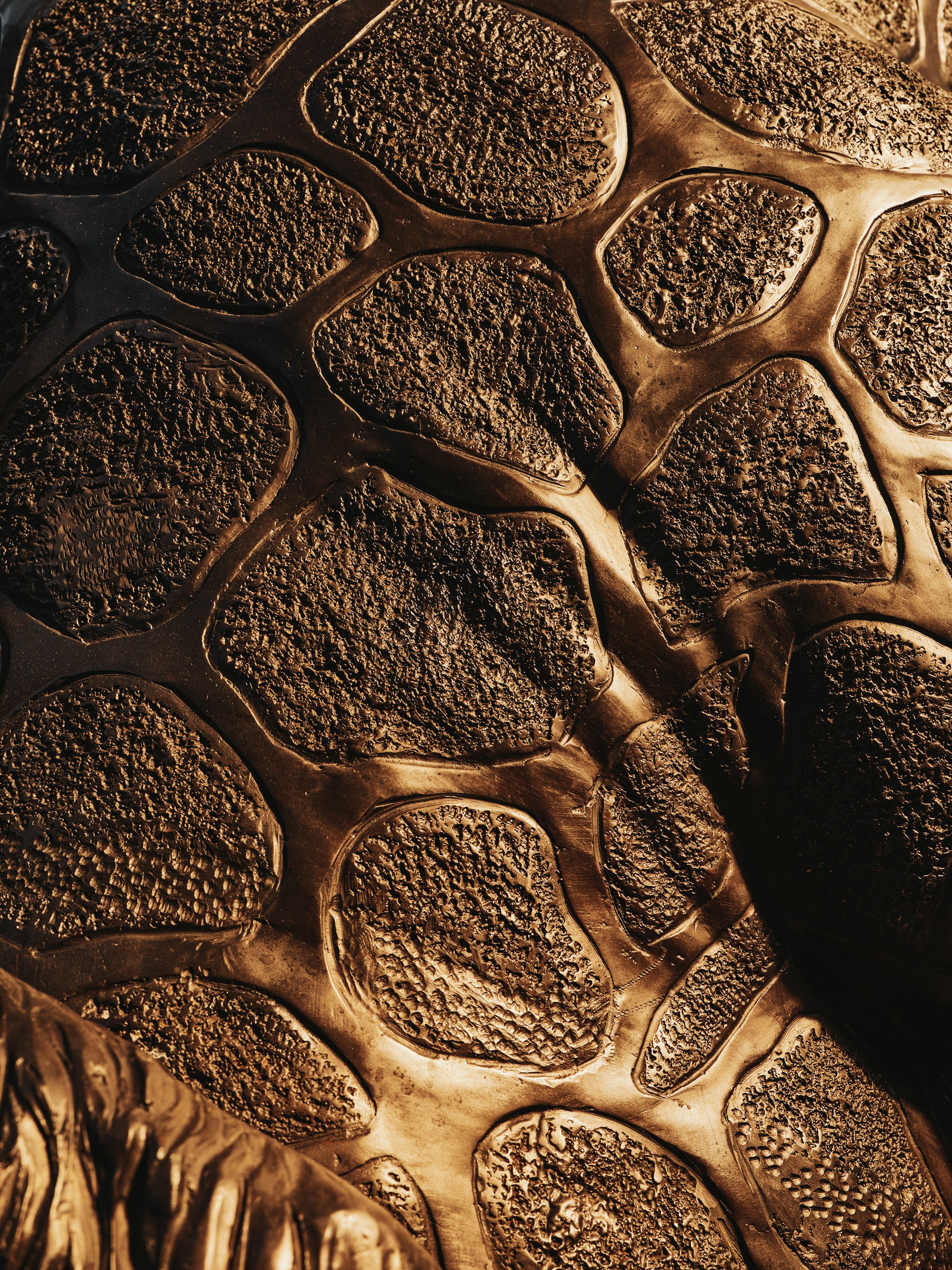
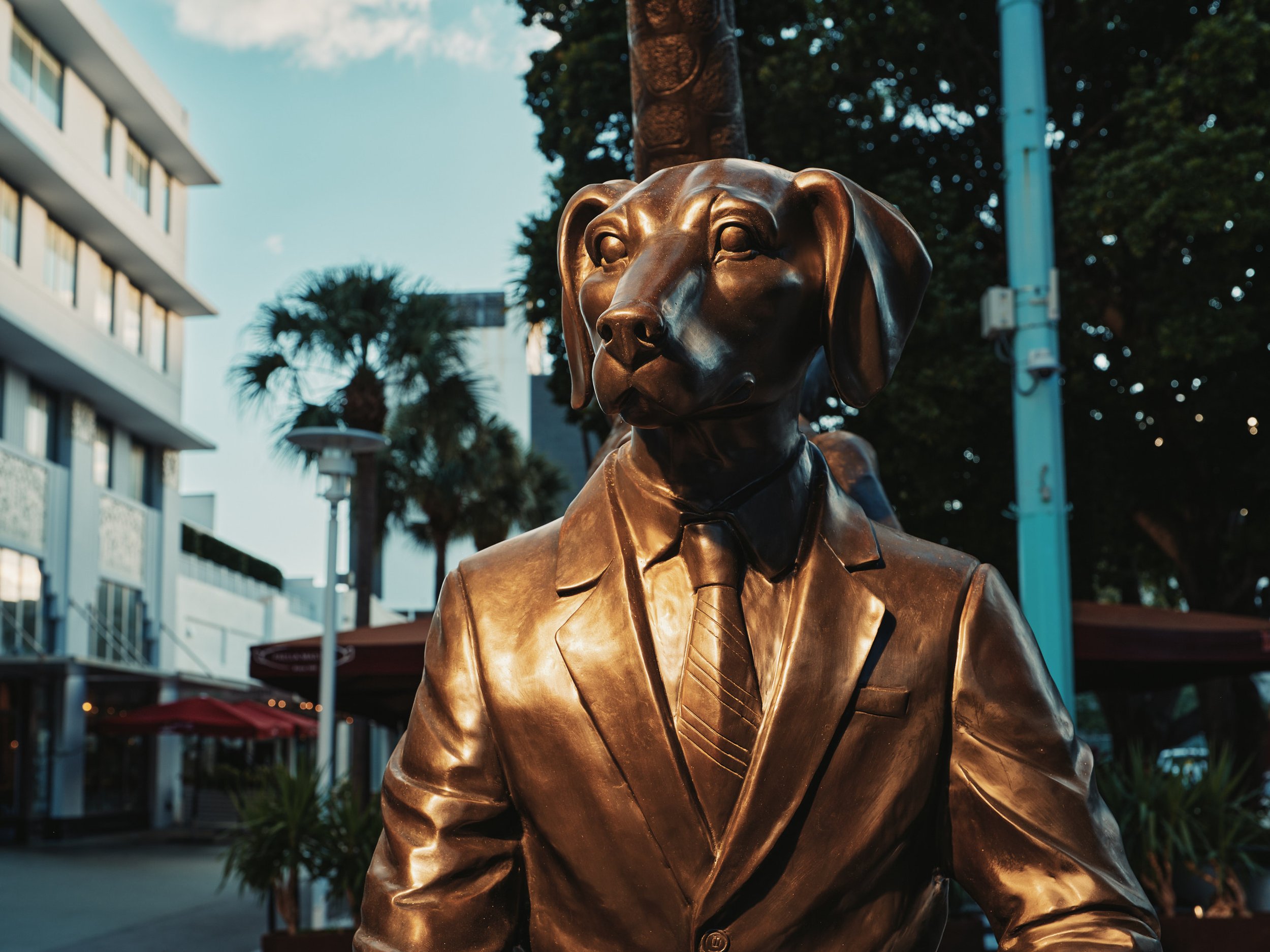
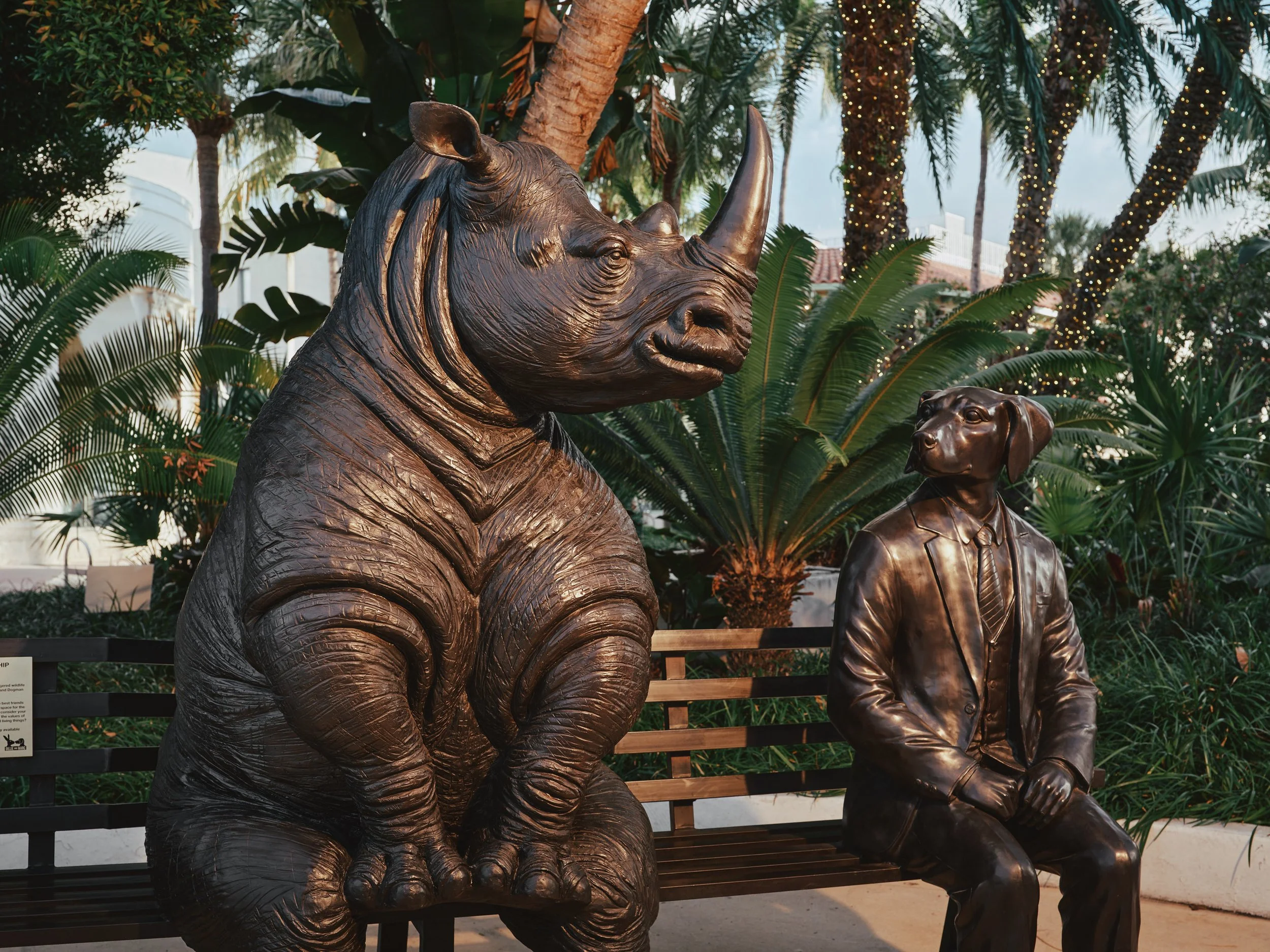
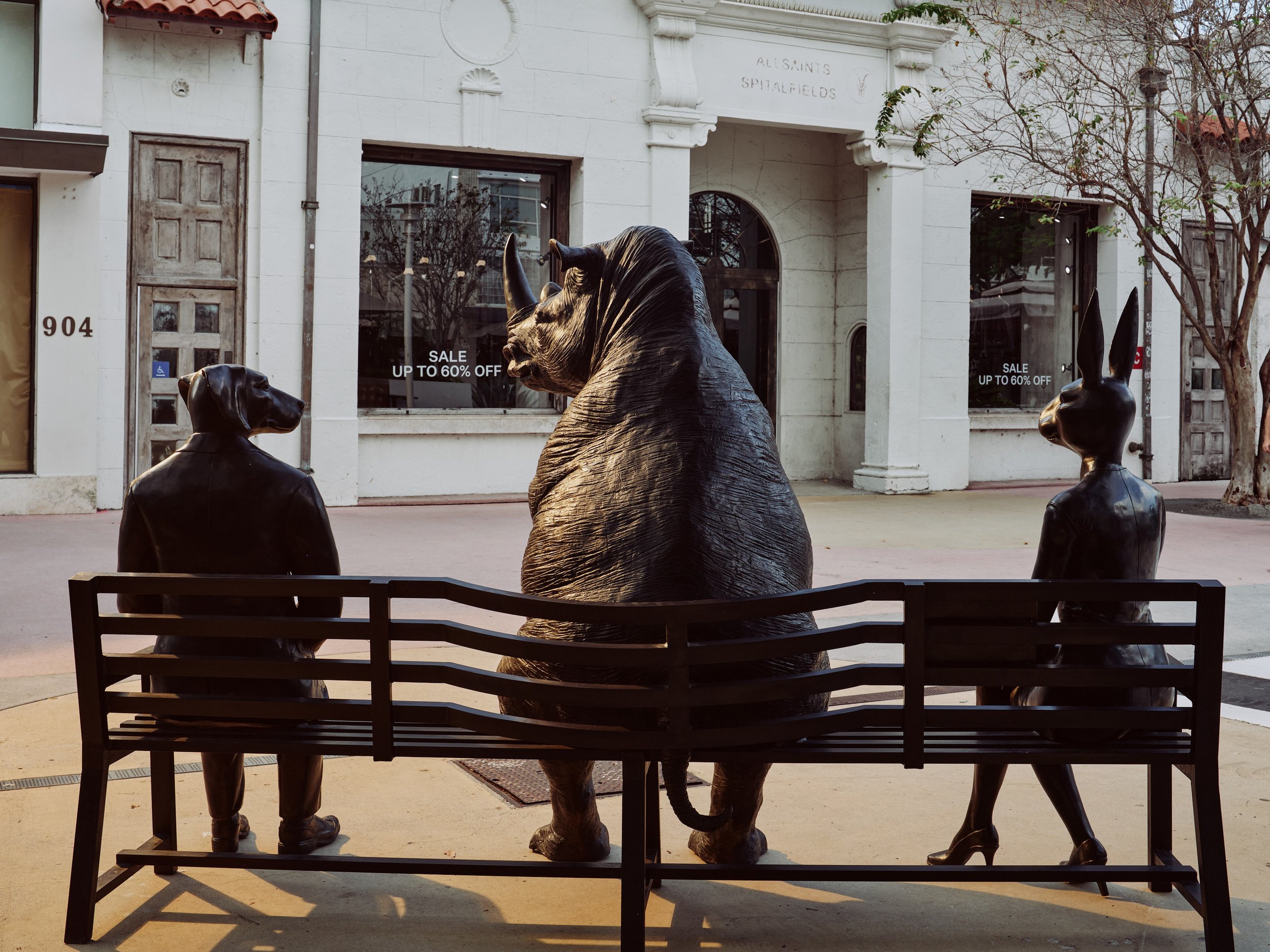
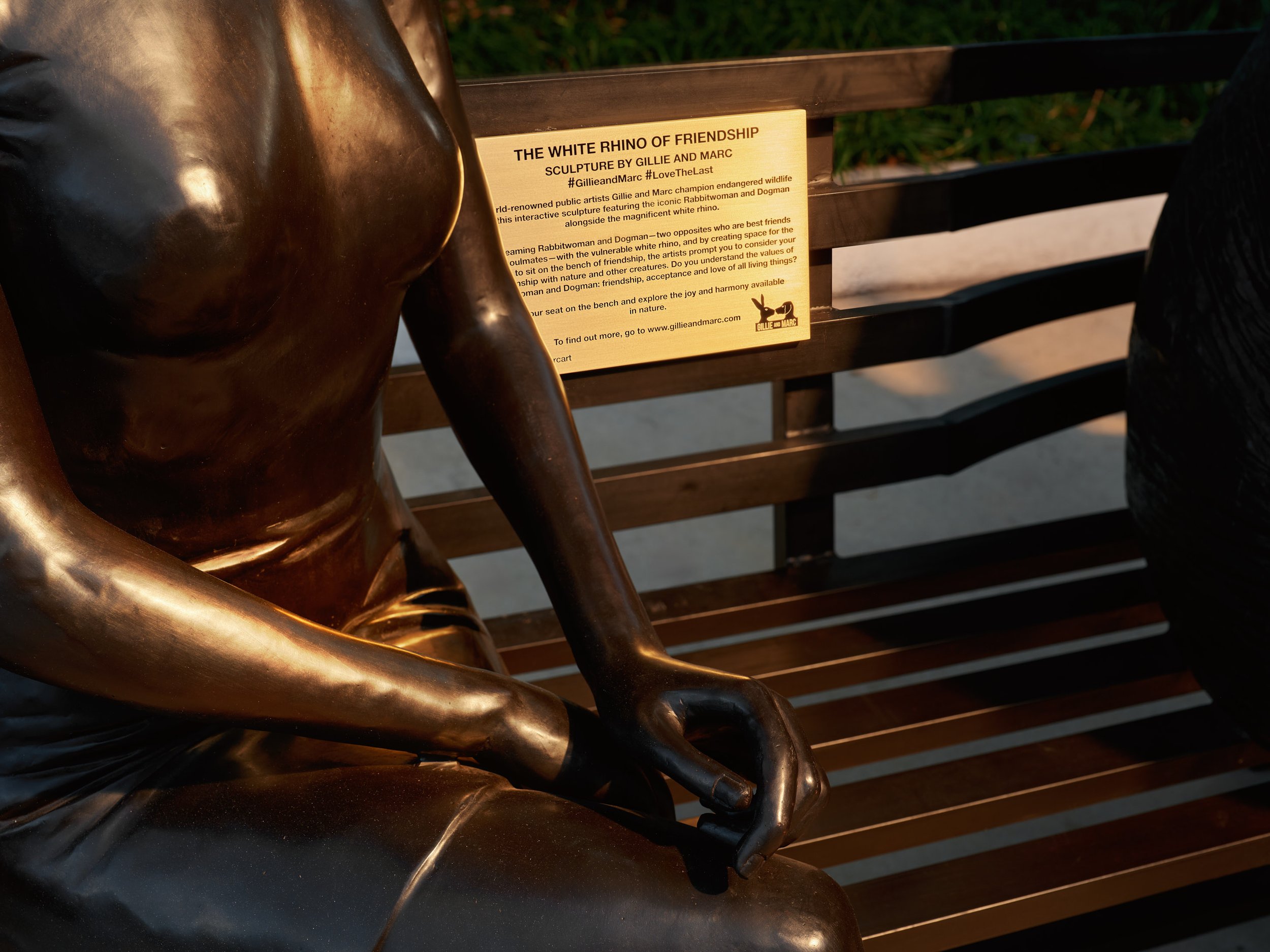
The Technical Details
I shot the sculptures within hours of installation on Lincoln Road and revisited them for another round when the outdoor mall was full of pedestrians doing their last-minute Christmas shopping.
The technical approach was consistent with the same “dead horse” I am always beating: Intentional, motivated lighting that I can control but doesn’t feel “artificial” or fake.” For this project, I was ok with extending my tolerance for “hyper-realism” and went for a more stylized look. The bronze that the sculptures are made from is a dark material that absorbs a lot of light. Its shape can stand out in a clean bright background such as what you might find in Gillie and Marc’s work that’s on display in New York. But the backdrop of Lincoln Road is cluttered and busy. Lots of dark foliage, shop windows, and signage. I felt the art getting lost in it without something to separate it from its surroundings. The mall isn’t what’s important here. The art is.
Sometimes soft even light is what you want, but I find that that only really works for two scenarios:
When there’s something about the subject itself that can separate it from the background. Think of a building with lots of practical lighting glowing softly in an otherwise pale twilight. Or a human face with the right luminance on a seamless canvas backdrop that you often find in cinematic portraits.
or when the scene as a whole is the subject.
But even the softest light needs direction and a visual pattern of light and darkness.
The example below shows a before/after demonstration of the difference that lighting can make in directing your eye to the subject.
Enter Light:
The gloomy, overcast morning didn’t help matters much. The sun this time of year spends most of the day hidden behind buildings at this location, and even when it did come out, the subjects were mostly backlit.
So I opted to prop my flash onto my Manfrotto light pole. This piece of kit is so clutch because it allows me to easily emulate the height of sunlight to give proper direction and shadows to my subject. A little CTO gel would be the cherry on top to keep the color consistent with a setting or rising sun. And of course to keep it all “believable” I kept the light’s direction relatively consistent with the sun’s actual positioning in the frame.
Of course I gotta get my own hero shot too! Doing my best “photographer hero” pose as I set up my next shot with my favorite weapon: Light.
These girls exhibited the kind of natural camera instincts that can only be found in a generation that grew up being on camera. All fun and no fear.
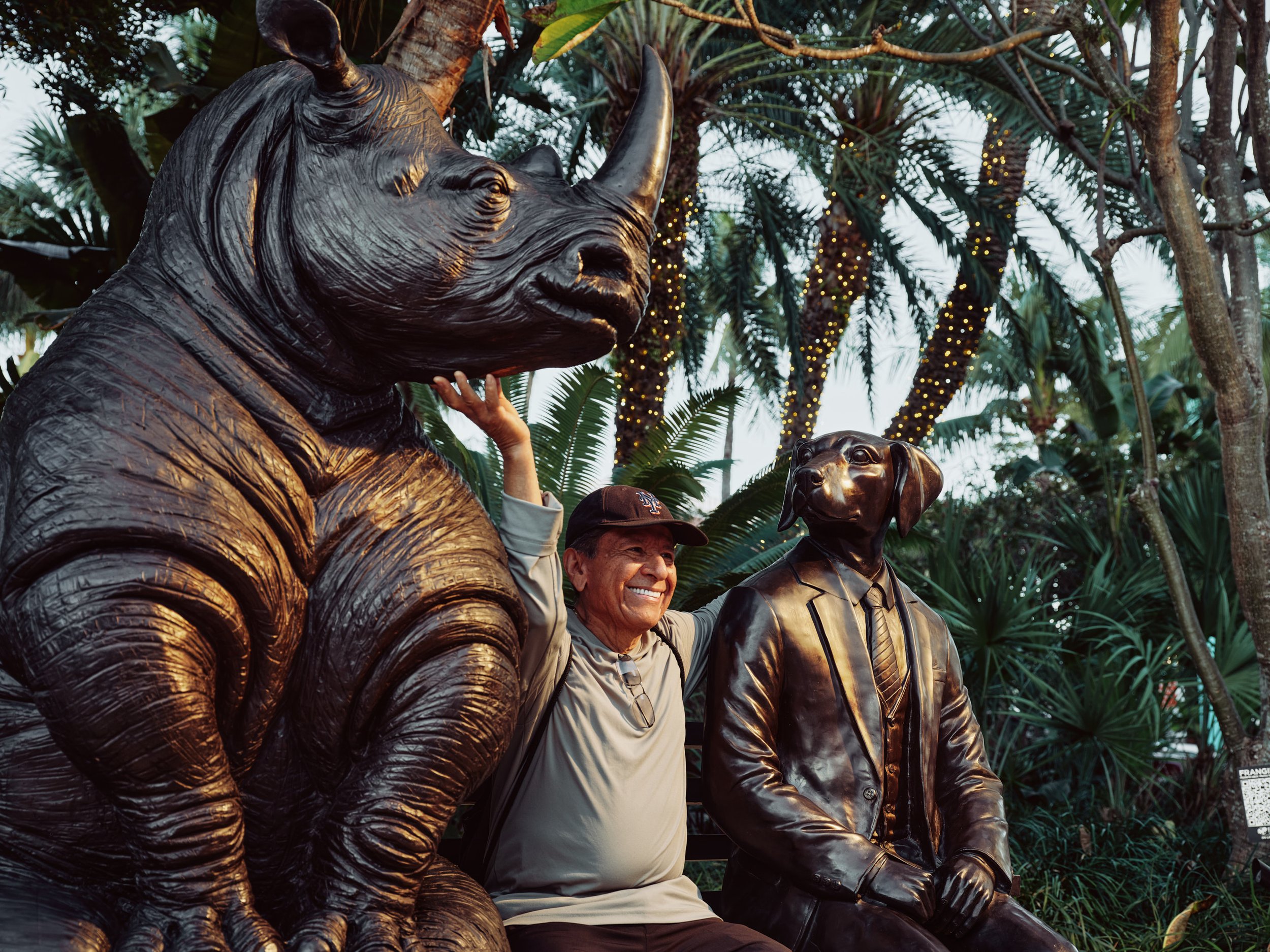

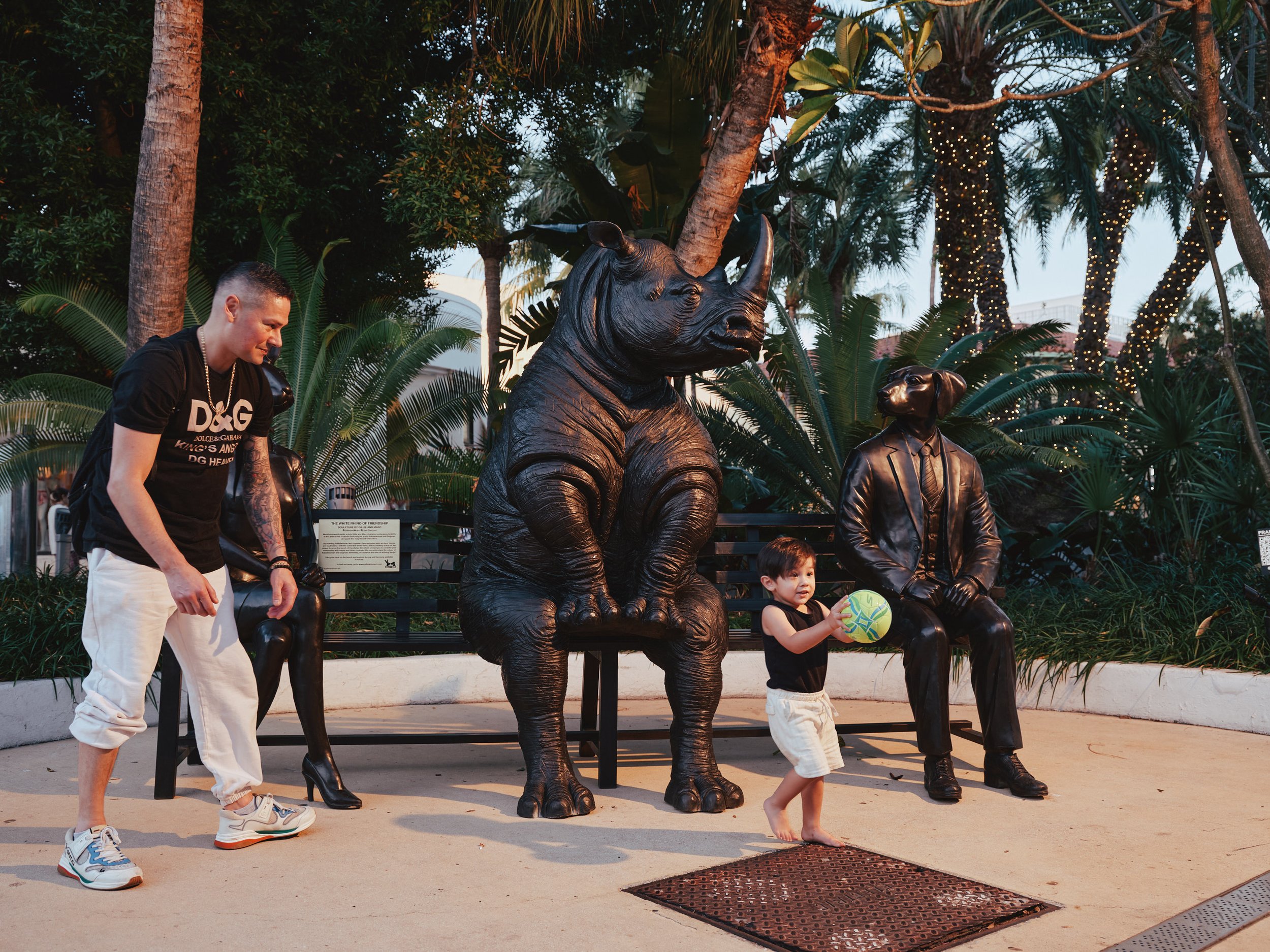
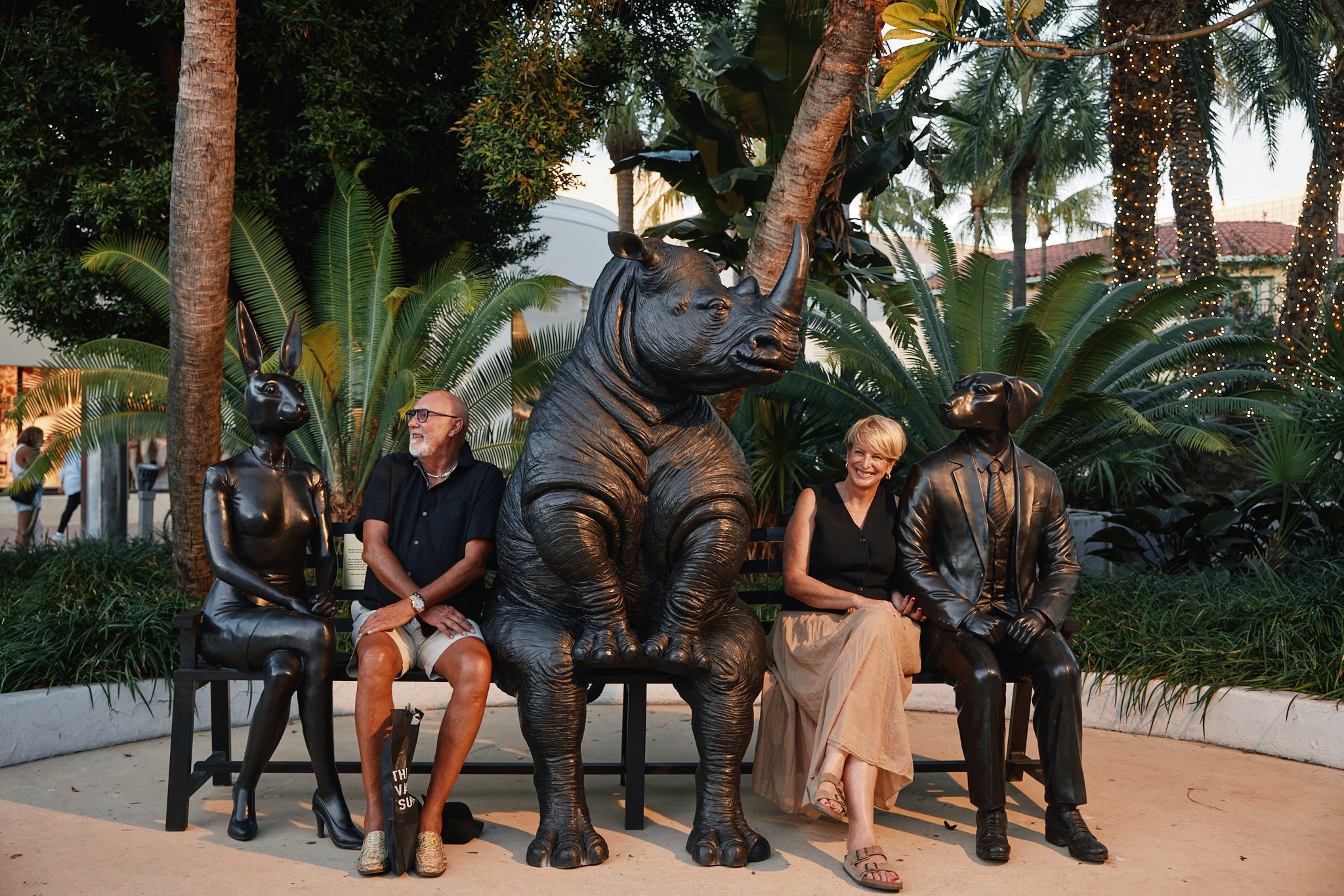
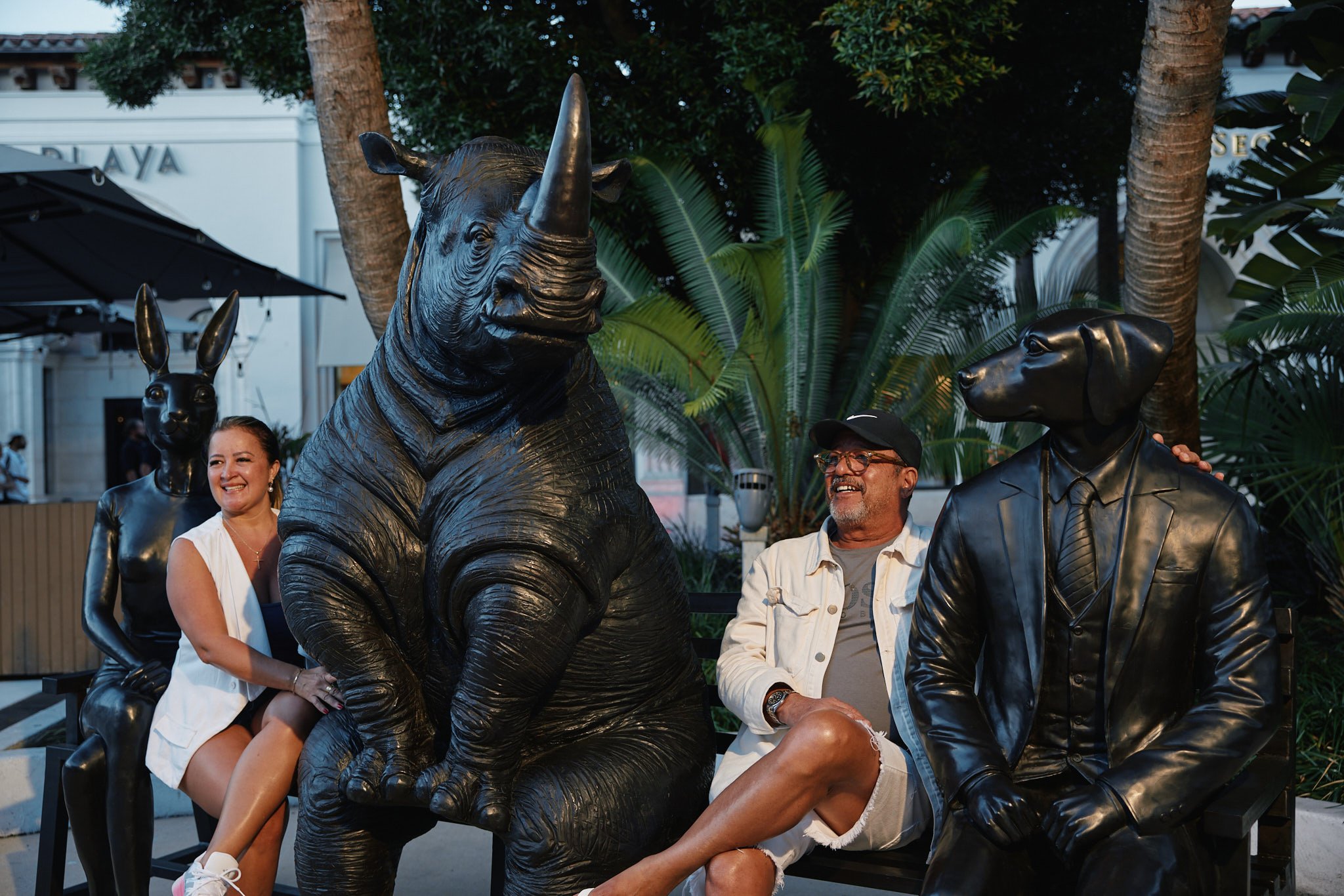
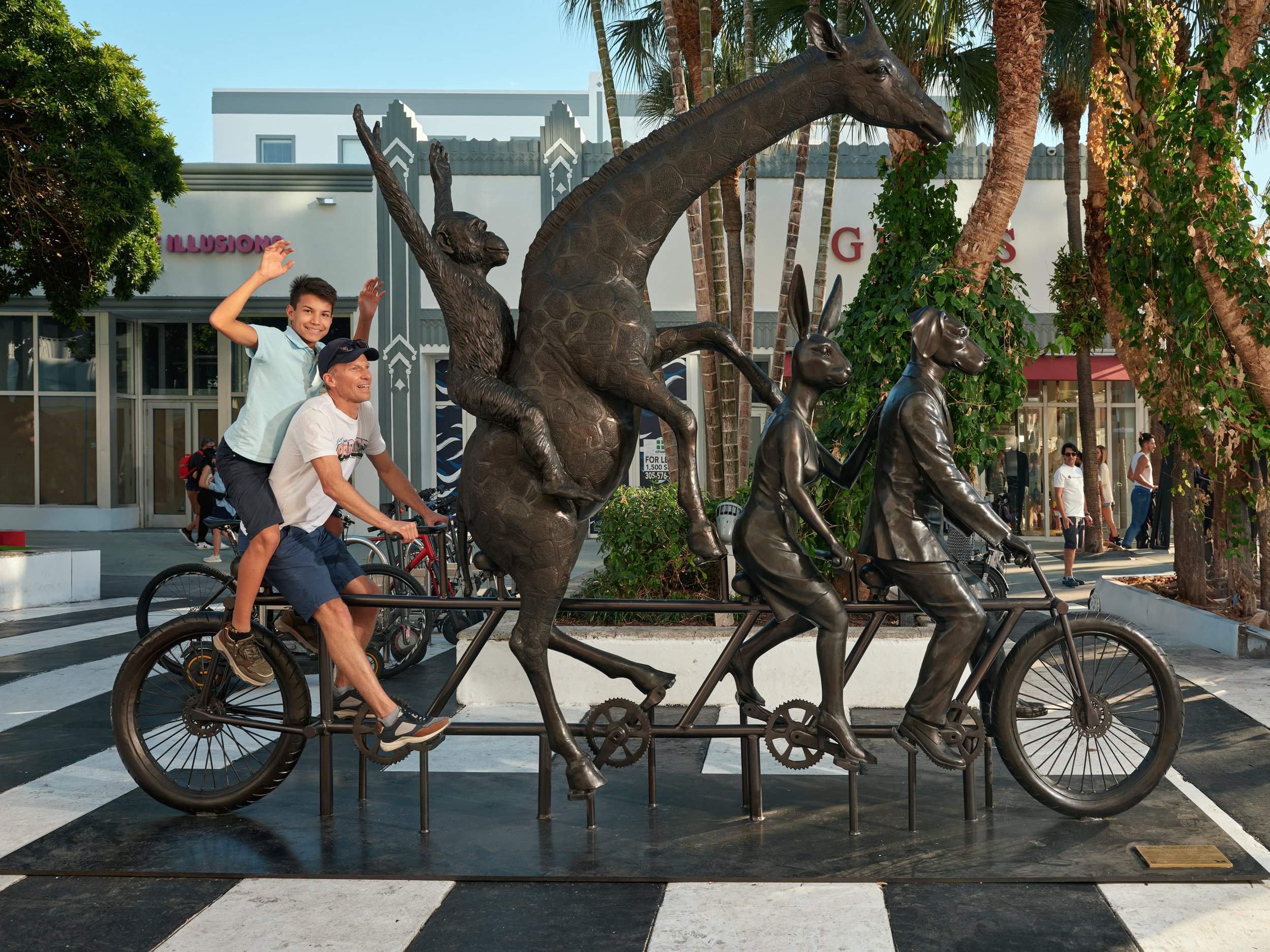
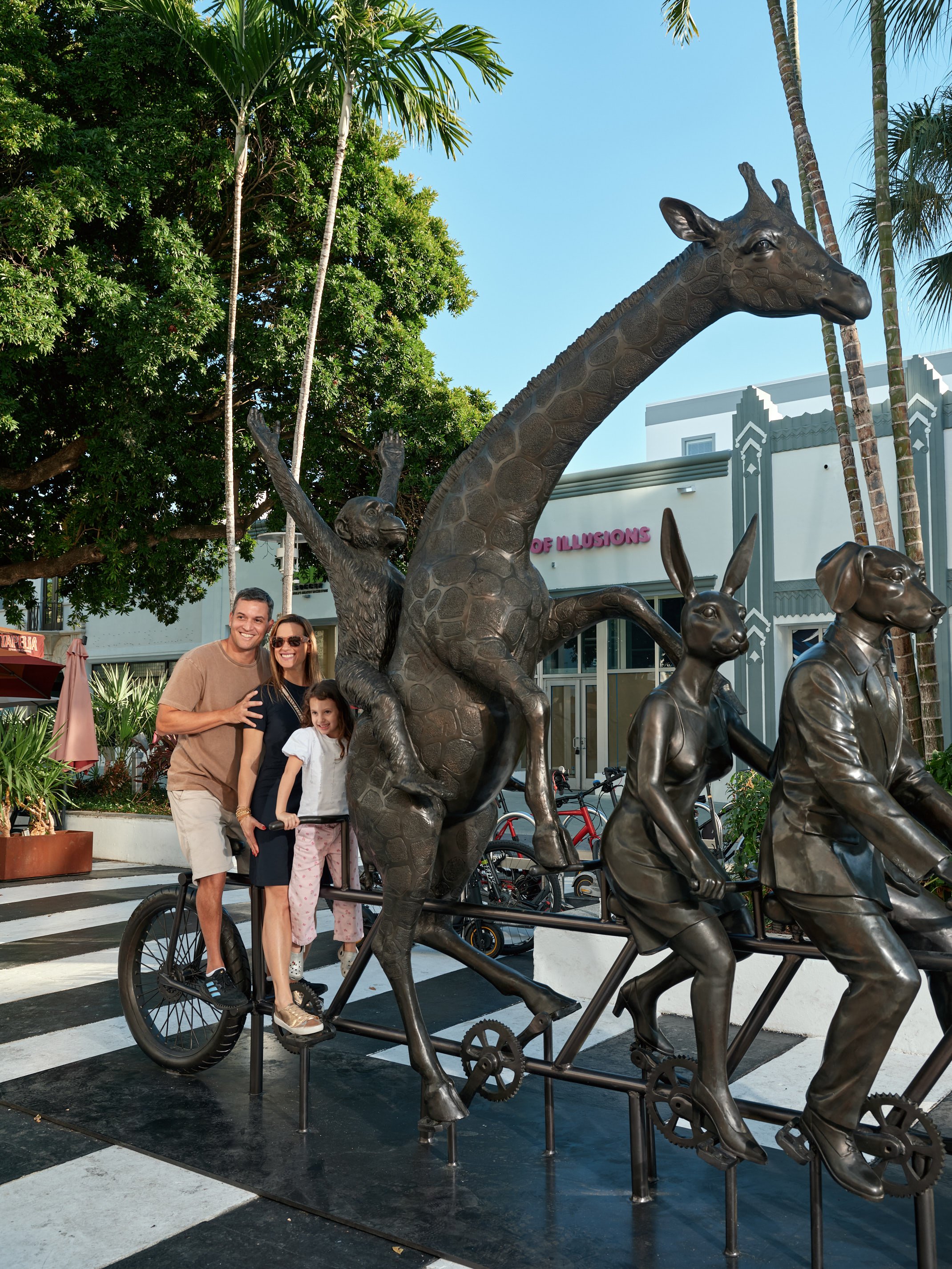
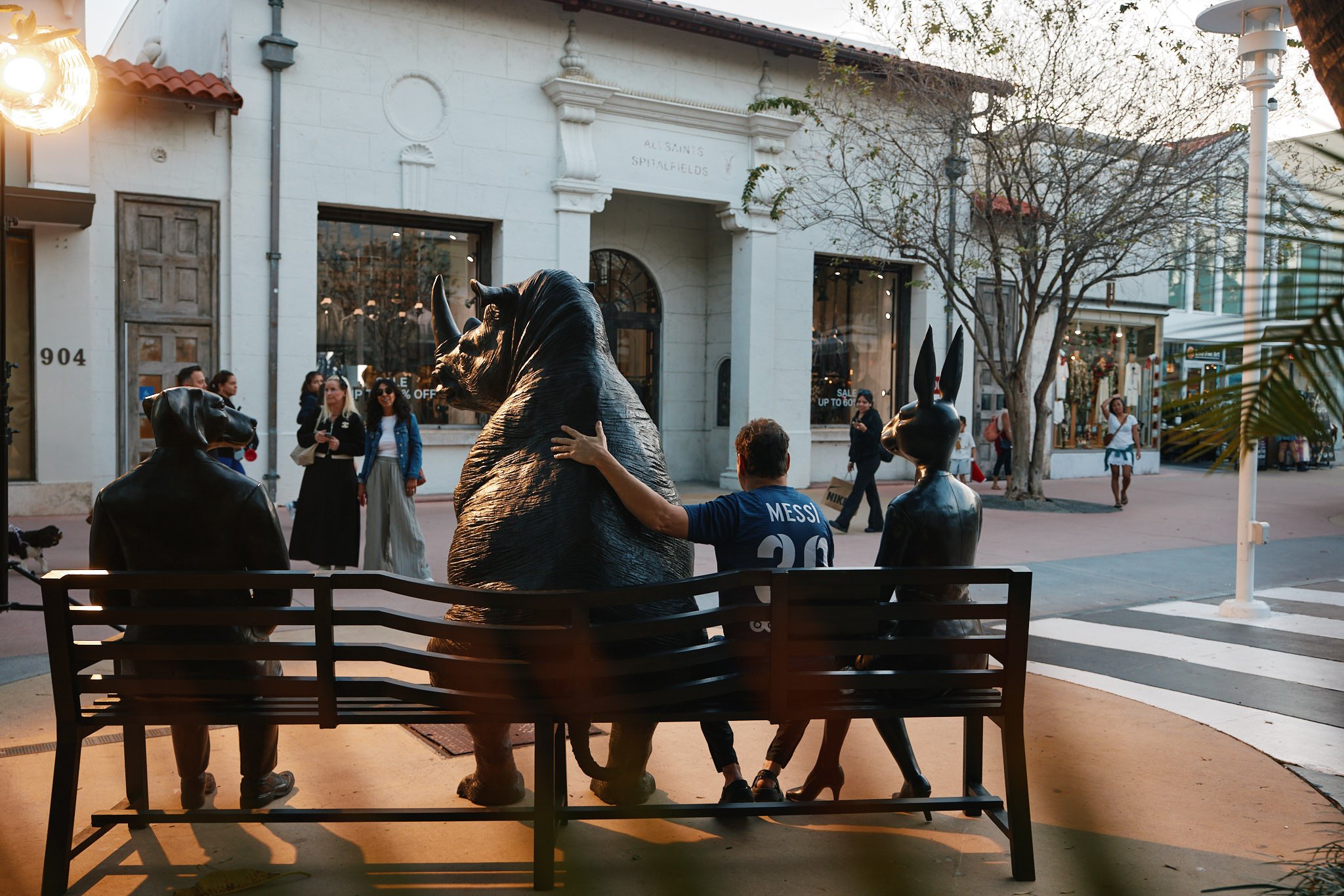

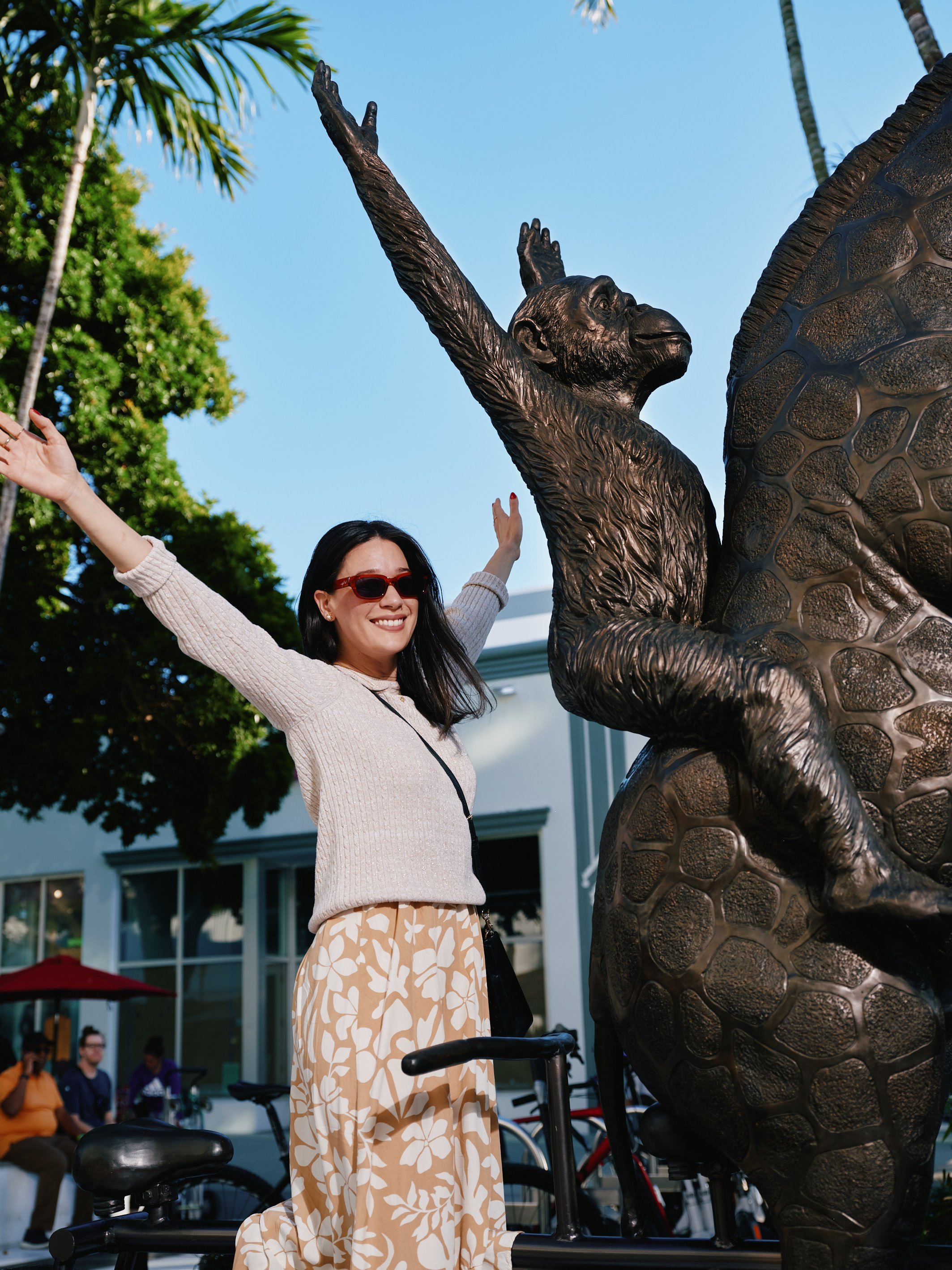
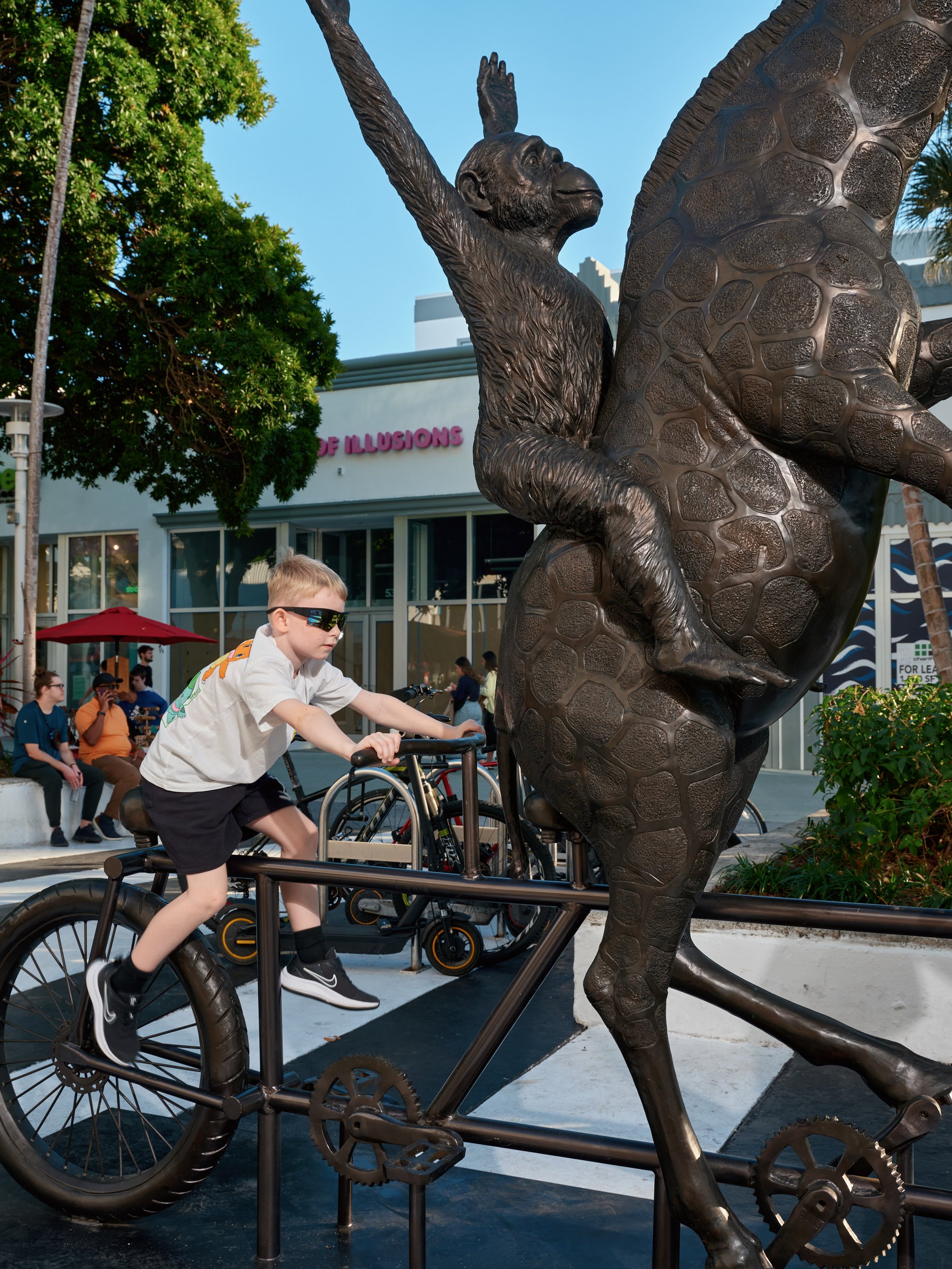
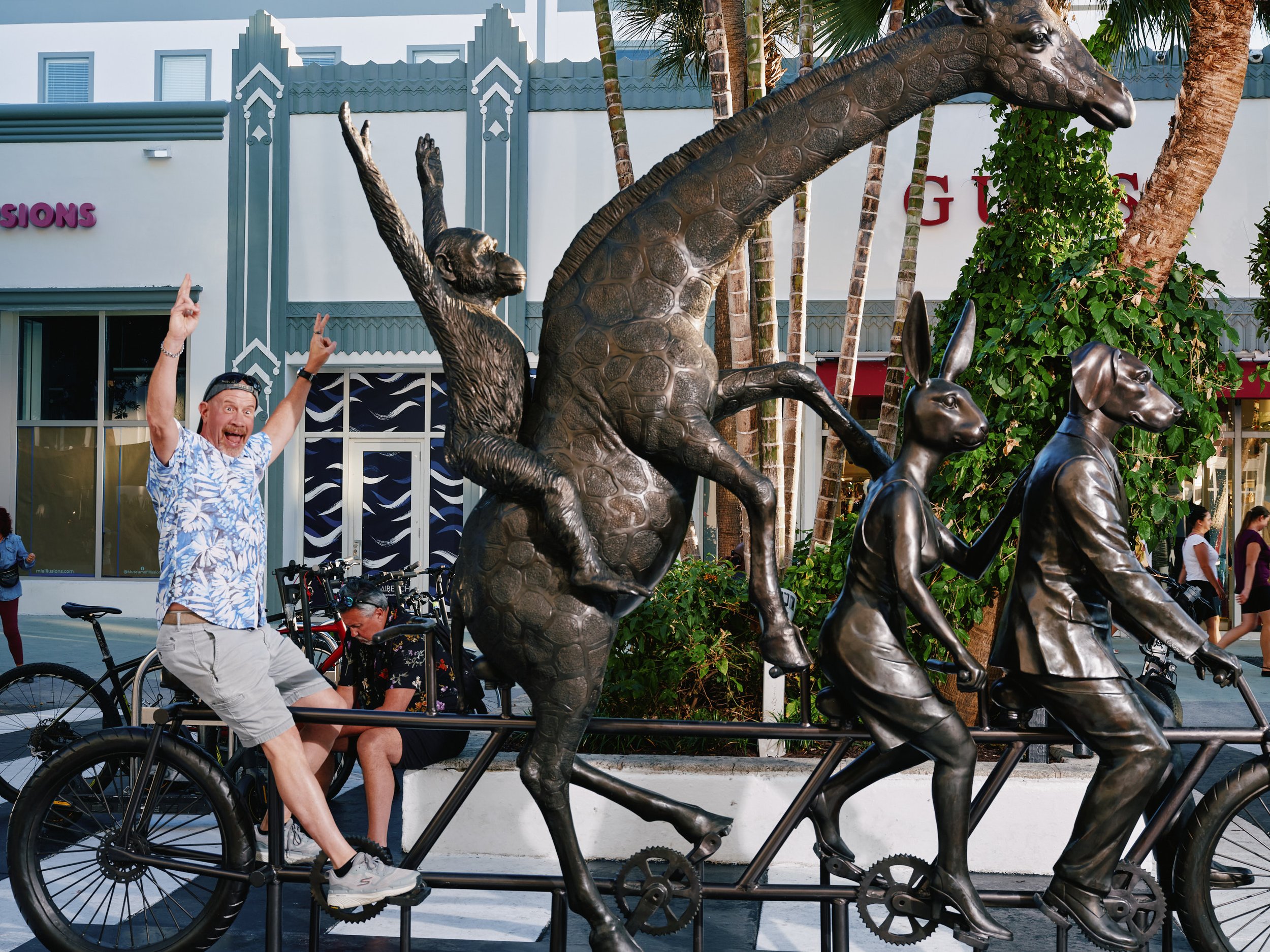
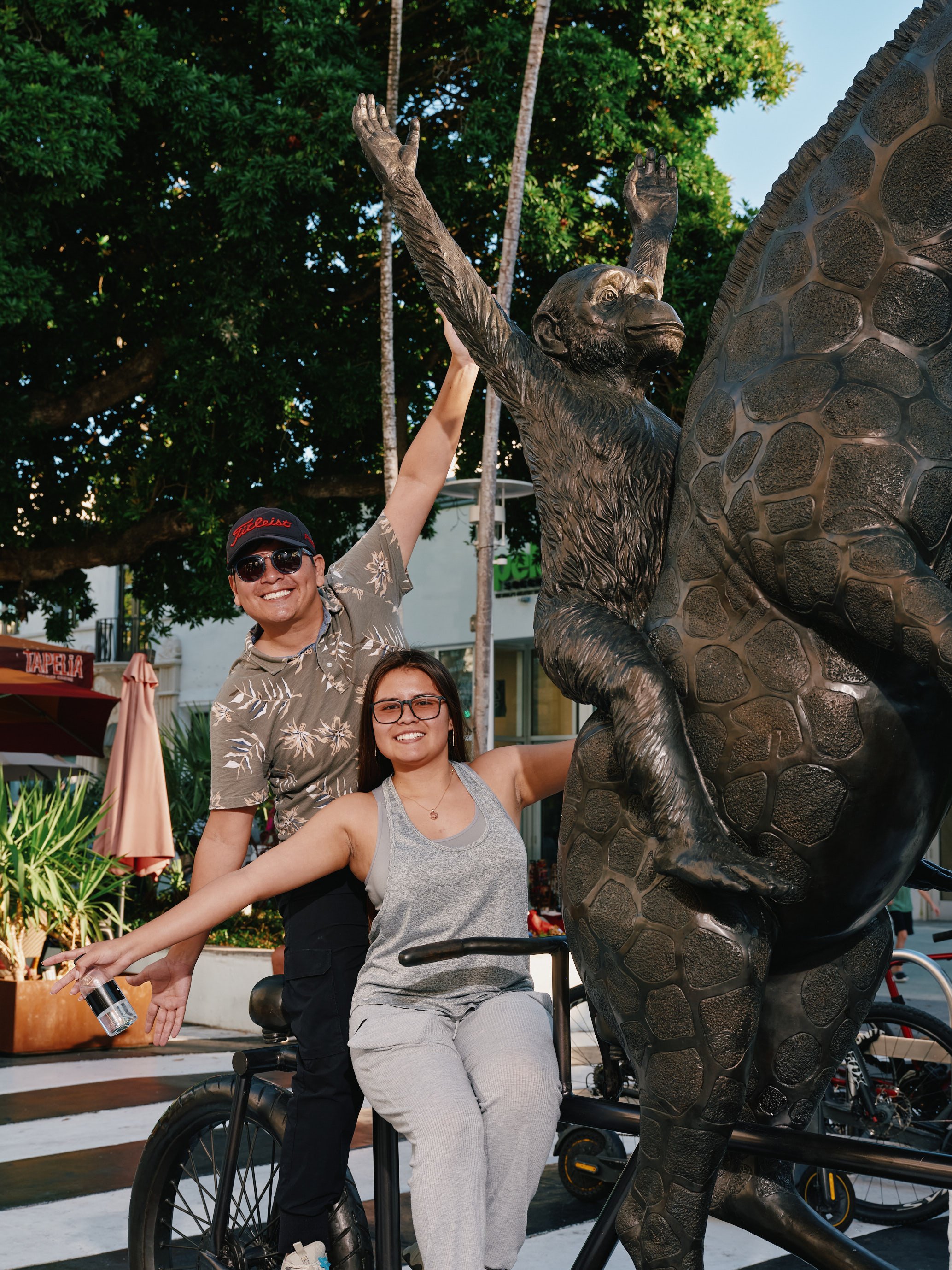

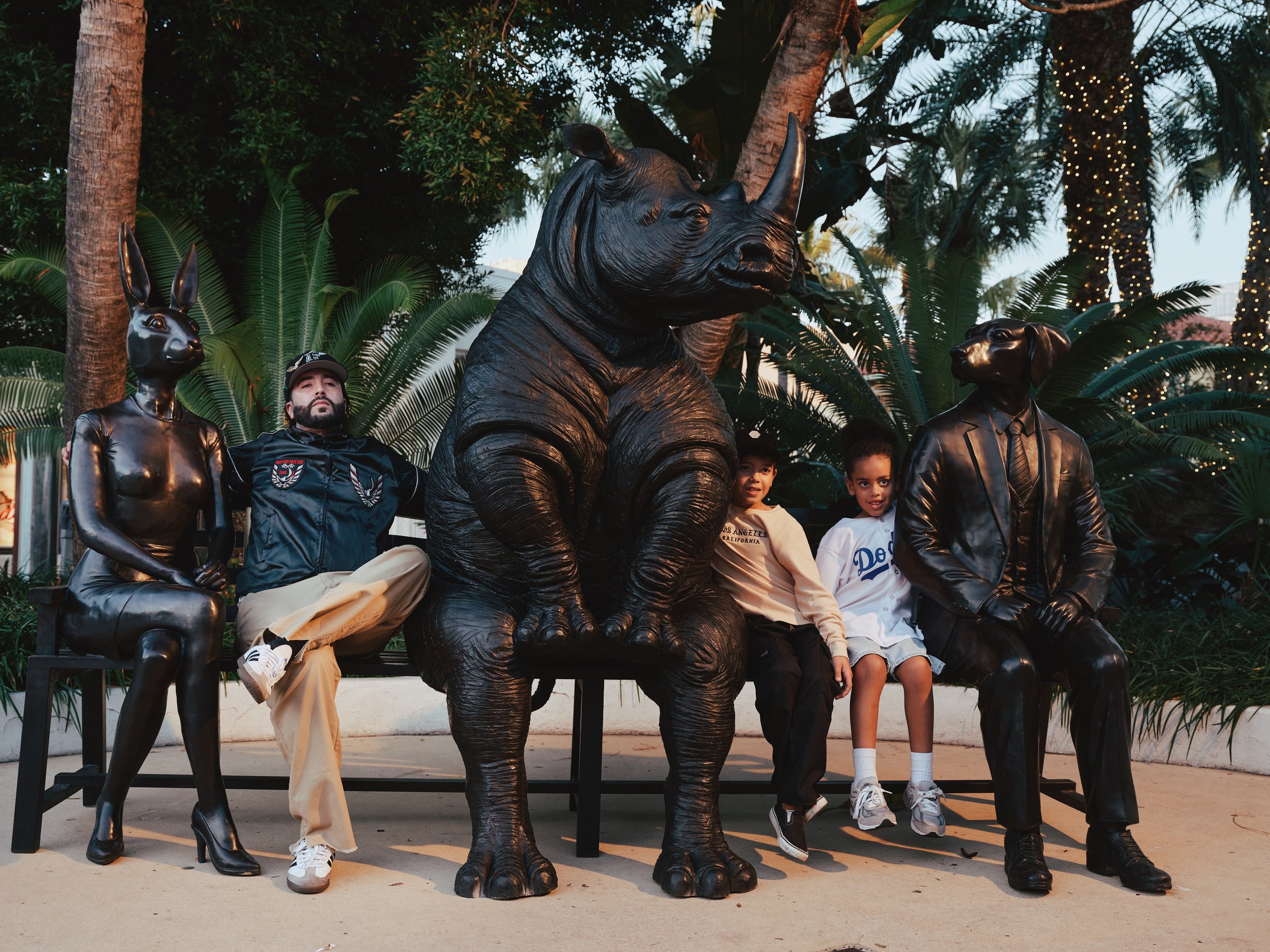
A new Element.
Lighting wasn’t the only variable I had to account for. I also had to show the interactive intention behind the art. Most museums and galleries will crucify you if you even breathe too close to one of the pieces. But Marc and Gillie’s art is unique because it’s designed to be physically interacted with. They want you to sit and climb and pose with the sculptures as a way of creating an intimacy that will spark conversations about conservation.
I’d have to introduce some street and lifestyle photography into the mix. This meant interrupting random strangers during the most stressful shopping season of the year to be on camera. Many people were not amused. But thankfully enough were in the holiday spirit.
There’s an art and a science to it.
Though I am no stranger to staging my architectural scenes with people, they’re often hired models for client shoots or I am standing far enough away from them as they walk about their day that they don’t notice me and aren’t usually the focal point of the compositions anyway. There’s no directing involved. I usually just wait until someone is where I need them to be and snap away and they’re none the wiser. But hiding in the corner like a sniper wasn’t going to cut it this time. I needed to be close for the photos to have the intended impact, which required something many of us photographers loath to do: being social and talking to the general public. Thankfully I am not as useless at this as I used to be, and thankfully, my lovely girlfriend (who is much better at being human than me) was there to help.
These weren’t professional models by any means, and I had to remain aware that they were doing me a solid favor by agreeing to participate, so I didn’t want to monopolize anyone’s time. These were taken as quick, documentary-style “snapshots” that would provide a fun juxtaposition to the more “polished” hero frames.
This project - like many things that come and go - came at exactly the right time for me as I was having my monthly existential crisis about work and life. It was an emotionally and artistically fulfilling shoot: here’s to more of them in 2025



